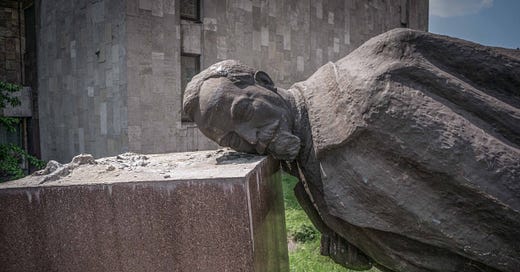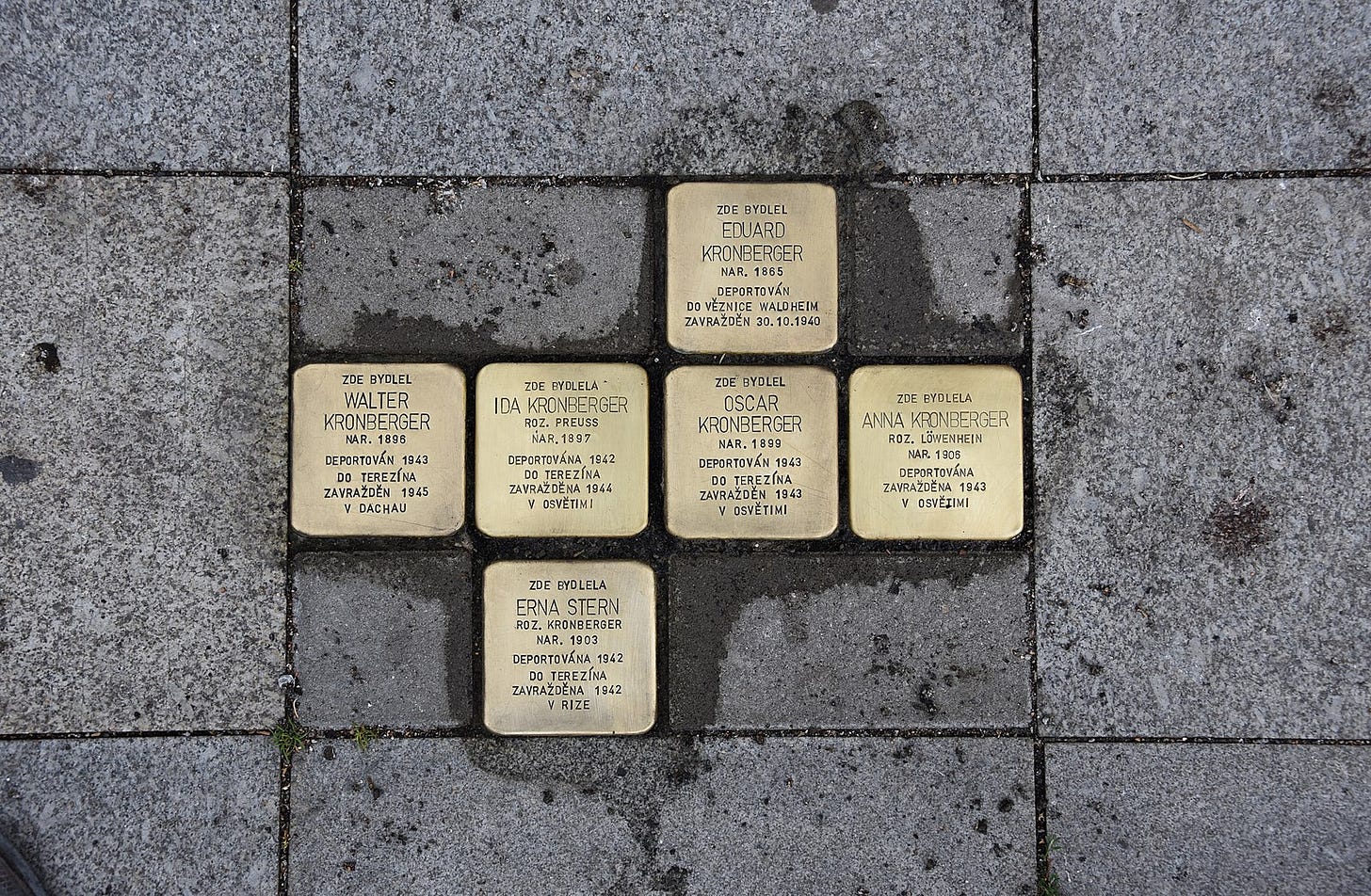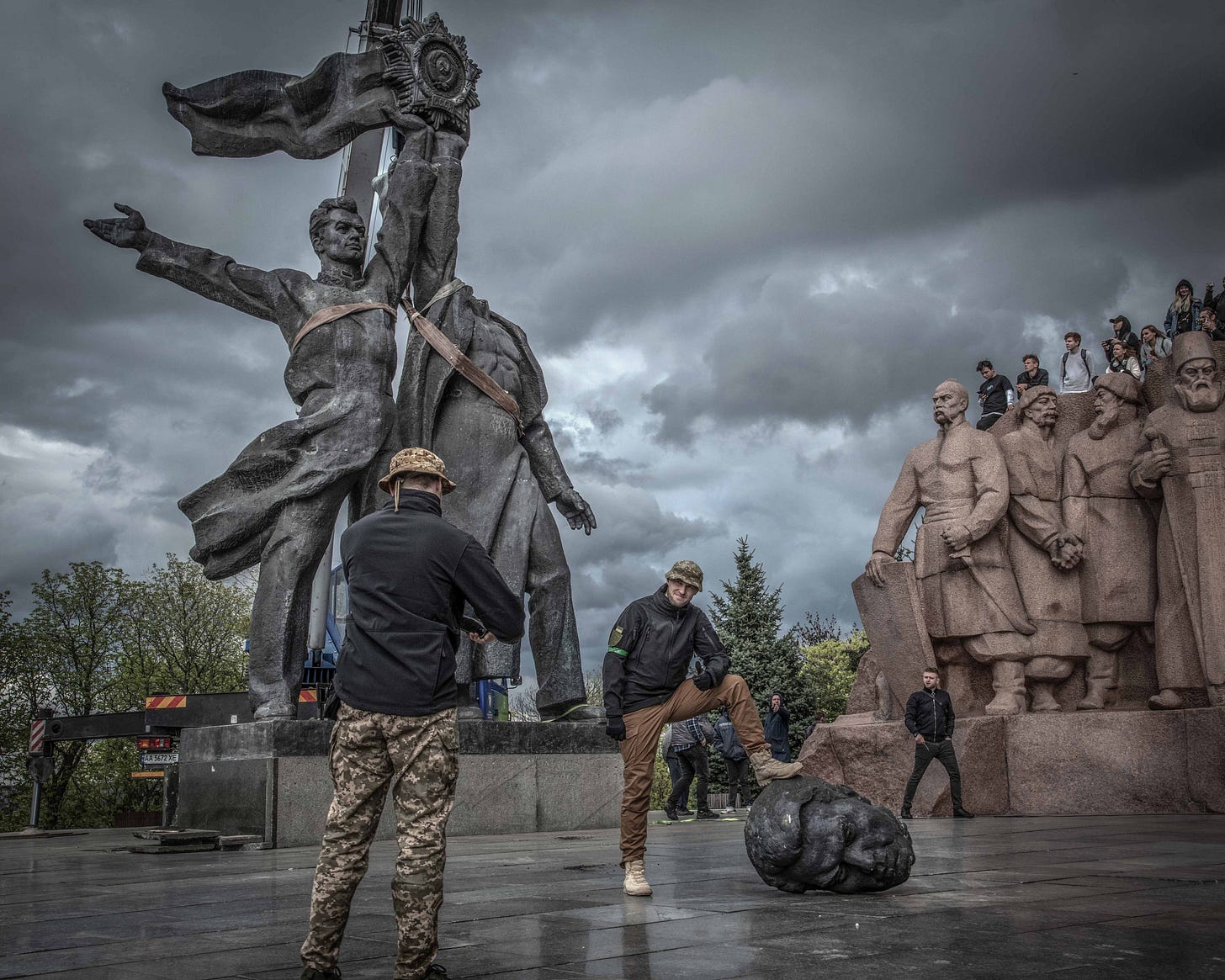Photo by Justyna Mielnikiewicz from “What Makes A Nation?” Kamianske, Ukraine, 2016.
Field Guide Vol. 255
Throughout the world, monuments have been used to remember. But what gets remembered—and how—is always a negotiation of power, and monuments nearly always spark debates. Which monuments go up and which get pulled down can offer a window into what stories one era of leaders chose to remember about another, as well as what stories each generation consciously sought to forget. How monuments get erected and how they are sometimes dismantled is the subject of this week’s Field Guide.
Did you know?
Christian Michelides, CC BY-SA 4.0, via Wikimedia Commons
The Stolpersteine memorials, or “stumbling stones,” is a project commemorating victims of the Holocaust. The idea was conceived by German artist, Gunter Demnig in 1992 and focuses on highlighting and honoring a diversity of victims on an individual level in contrast to other vast monuments representing the scale of the atrocity and losses. Small brass plaques are embedded in sidewalks in front of the last known residences of individuals persecuted by the Nazis, including Jewish, Roma, afro-German and disabled citizens. There are over 70,000 memorial blocks laid in more than 1,200 cities and towns, existing in 20 languages. Together, the Stolpersteine make up the largest decentralized monument in the world.
While some people have argued placing the stones underfoot is inappropriate or disrespectful, Michael Friedrichs-Friedländer the craftsman of the Stolpersteine, says, “I can’t think of a better form of remembrance. If you want to read the stone, you must bow before the victim.”
***
What Makes a Nation?
By Justyna Mielnikiewicz
This piece is published in collaboration with Coda Story as part of our Complicating Colonialism issue.
The history of Russian occupation in Georgia dates back more than 200 years. After the collapse of the Soviet Union, it won its independence but separatists in Abkhazia and South Ossetia refused to acknowledge the new Georgian state and went to war. In 2008 Russia sent the military into South Ossetia and Abkhazia to shore up control and today twenty percent of Georgia remains under Russian control. Meanwhile, Ukraine’s complex history with its eastern neighbor is deeply rooted in centuries of Russian colonialism and expansionism. In this photo essay, award-winning Polish photographer Justyna Mielnikiewicz documents the people of Ukraine, Georgia and Kazakhstan at times of upheaval—in the throes of protest, dissent, and strife, and as they try to hold on to their identity in the face of modern Russian imperialism.
Dniprovka Village, Ukraine, July, 2015. A gold-painted, headless statue of Vladimir Lenin stands in the center of Dniprovka, near the banks of Kakhovka Reservoir, on the Dnipro River. Since 2013, hundreds of Lenin statues have been removed from cities across Ukraine.
Kyiv, Ukraine, 26 April, 2022. Amid the Russian invasion of Ukraine, Kyiv’s City Hall ordered the removal of Soviet-era sculptures of Russian and Ukrainian workers which formed part of a memorial known as The People’s Friendship Arch, dedicated to Ukrainian-Russian unity. After the head of a Russian worker broke off, a Ukrainian soldier stepped on it while his friend took a photo.
Keep reading with a 7-day free trial
Subscribe to Stranger's Guide to keep reading this post and get 7 days of free access to the full post archives.







